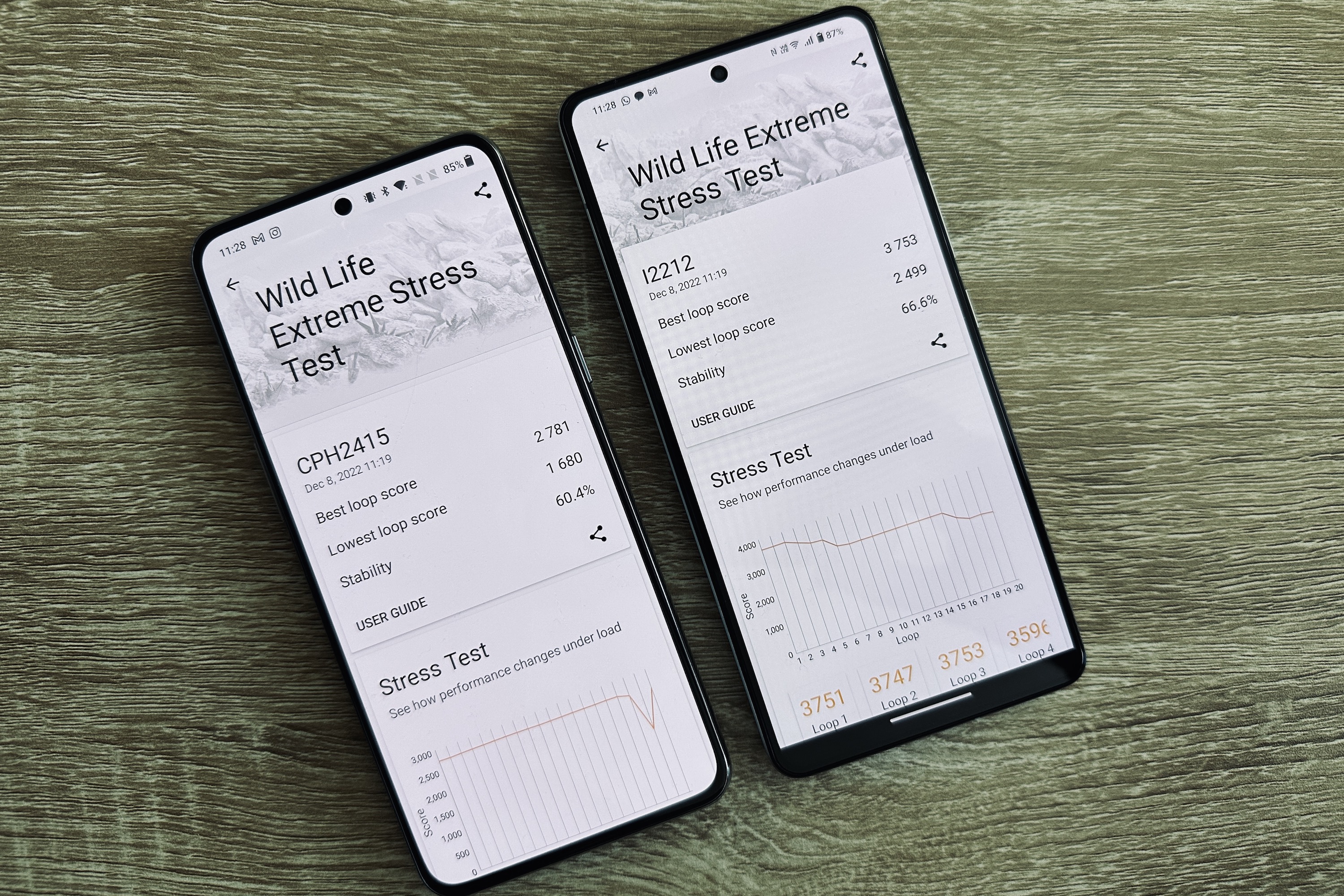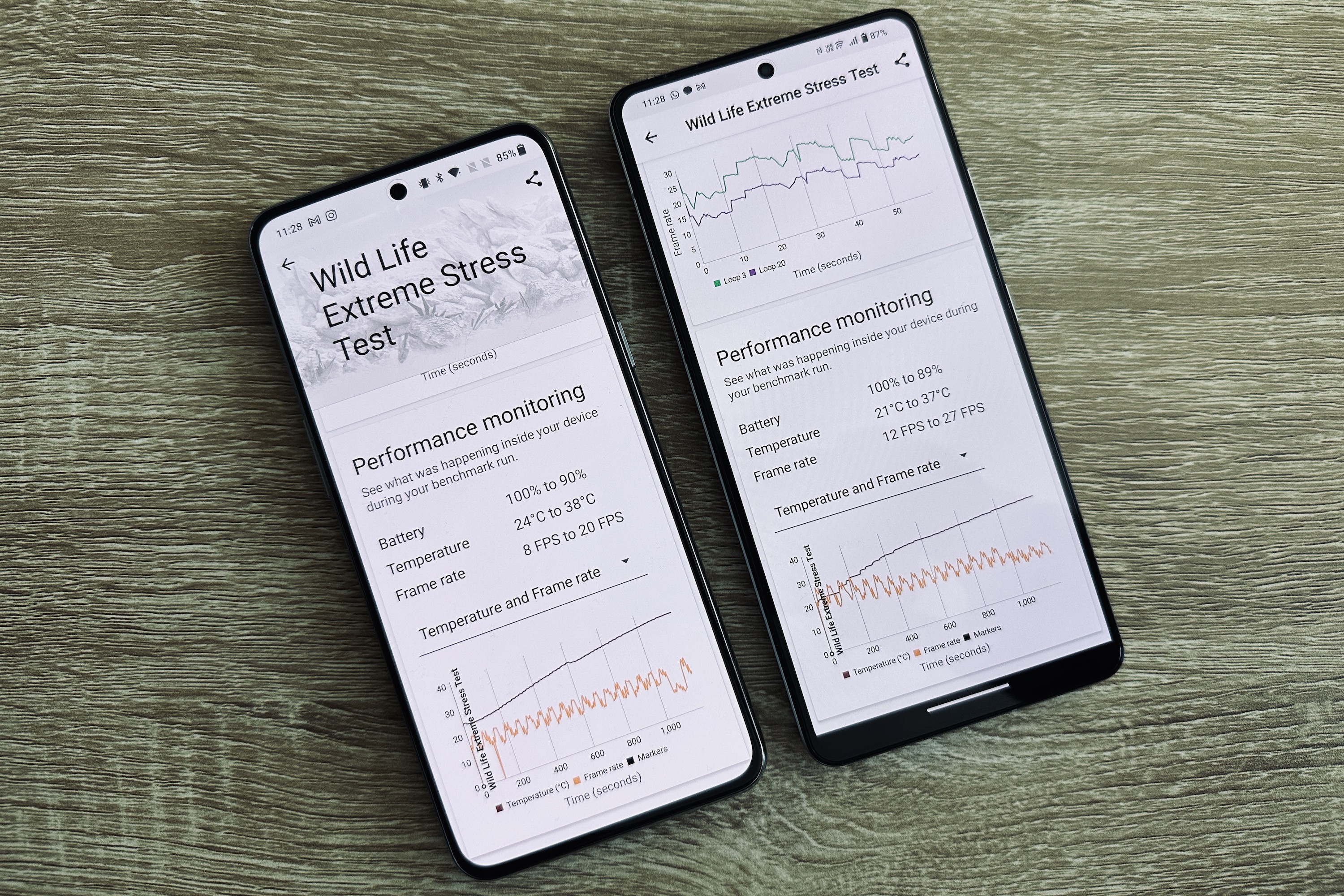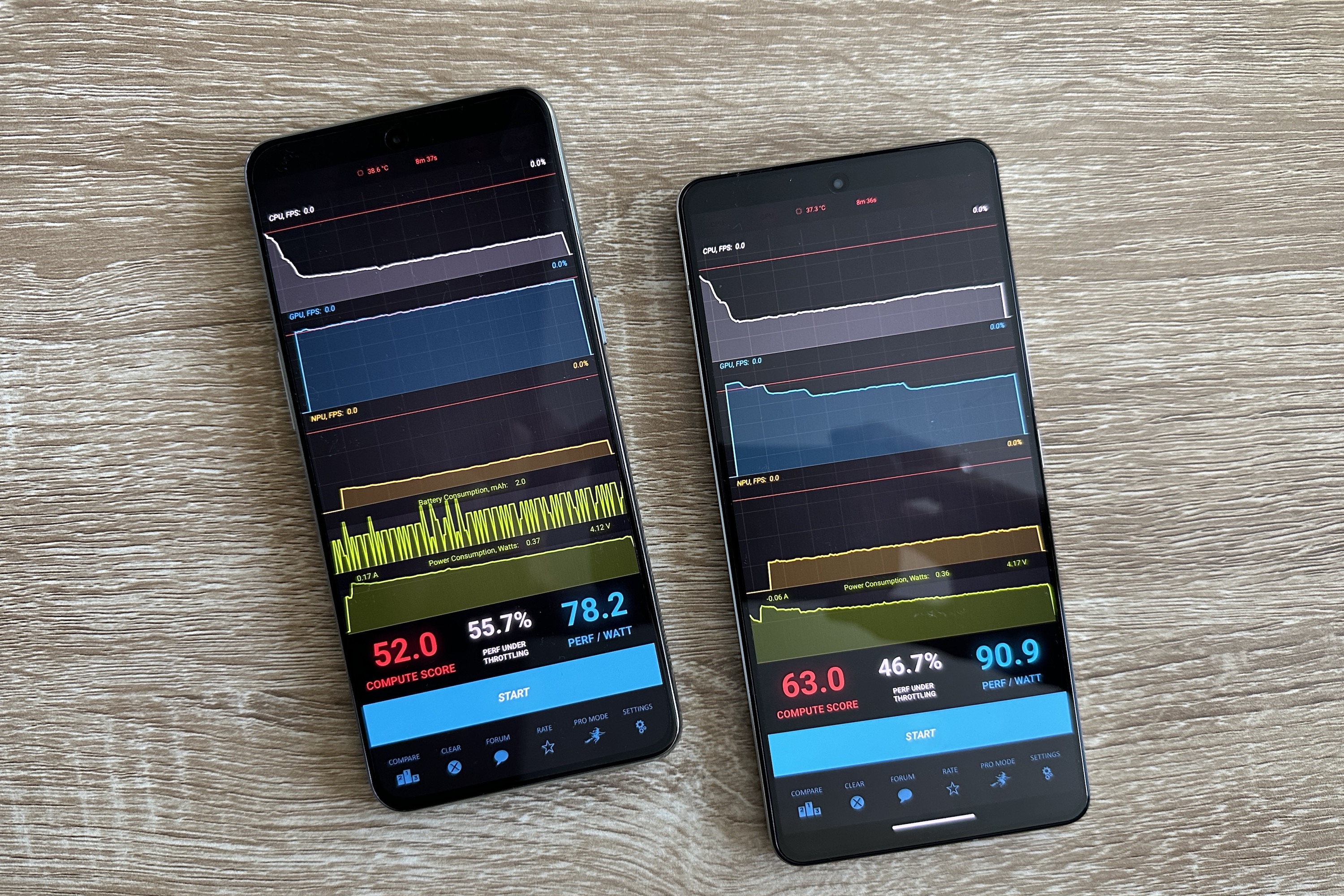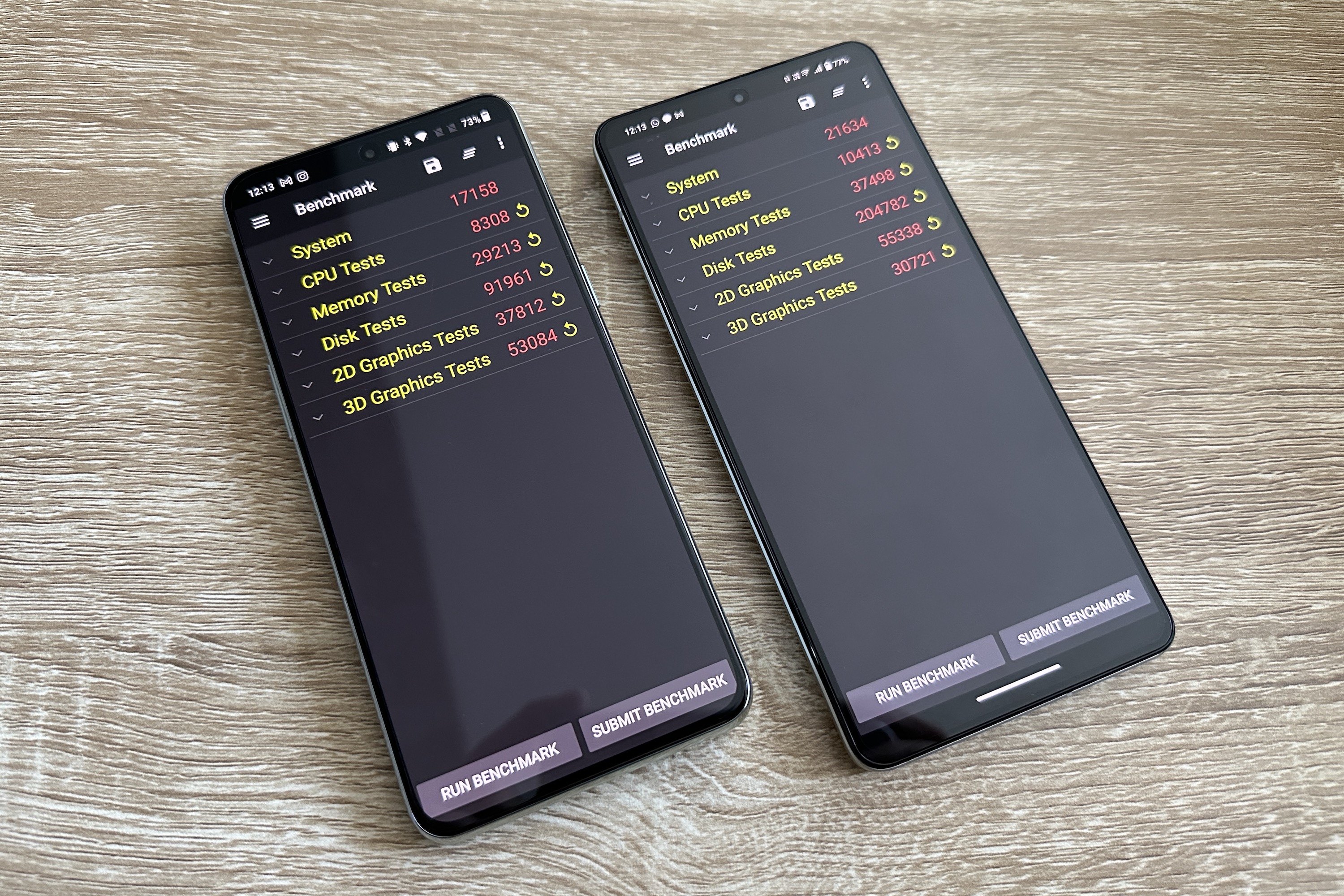The Qualcomm Snapdragon 8 Gen 2 is the processor that’s almost certainly going to be inside the top smartphones in 2023, and it’s sure to be a great performer, particularly given the success of the Snapdragon 8+ Gen 1. We’ve been using the Iqoo 11, one of the very first phones to feature the Snapdragon 8 Gen 2 chip, to try and understand just what effect it will have on next year’s phones. Will it have more power, better efficiency? That’s we want to find out.
Rather than rely on anecdotes or a single comparative benchmark, we put the Iqoo 11 through a series of tests over a single day alongside the OnePlus 10T with a Snapdragon 8+ Gen 1 chip to get an idea of what to expect from the new processor on a daily basis. Here’s what happened.
Meet the Iqoo 11

Not heard of Iqoo? It’s part of Vivo, which in turn is part of BBK Electronics along with Oppo, Realme, and OnePlus. I really liked the Iqoo 9T that I used recently, and the Iqoo 11 is its latest phone, seen here in Legend specification with the cool BMW Motorsport color scheme. The Qualcomm Snapdragon 8 Gen 2 is the headline spec feature, and it’s joined by a custom image signal processor (named the V2 Chip), a special cooling system, a 6.48-inch AMOLED screen, and a triple-camera on the back.
I compared the Iqoo 11 to the OnePlus 10T, one of the more recent phones to launch with the Snapdragon 8+ Gen 1 inside. It’s a modestly priced phone, and as Iqoo and OnePlus are both part of the BBK Electronics empire, they’re likely somewhat related in terms of software. It seemed fairer than putting the Iqoo 11 against a phone like the Samsung Galaxy Z Flip 4, which differs greatly. The Iqoo 11 does have a slightly larger 5,000mAh battery compared to the OnePlus 10T’s 4,800mAh battery.
Both phones were fully updated, apps were cleared from the background when running benchmarking apps, and both started the day of tests with 100% battery capacity.
The Snapdragon 8 Gen 2 versus benchmarking apps
We don’t tend to rely on benchmarking apps as a means of testing outright performance, as results can be manipulated by the device and manufacturer, and other factors can affect the results you get. However, for the sake of comparison here, they do provide an interesting insight into how the new Snapdragon 8 Gen 2 compares to the old Snapdragon 8+ Gen 1.
The first test was 3DMark’s Wild Life Extreme Stress Test, where a challenging loop is played 20 times on the device, during which data is collected on performance, temperature, and more. Upon completion, the Iqoo 11 posted a “best loop” score of 3,753, and although the phone wasn’t that hot, the temperature increased throughout the test, peaking at 37 degrees Celsisus. The battery showed 89% remaining after the test.
Picking up the OnePlus 10T, it was immediately warmer than the Iqoo 11. According to the data, its best loop score was 2,781, and the temperature peaked at 38 degrees Celsius. Interestingly, frame rates remained higher on the Iqoo 11, ranging from 12 frames per second (fps) to 27 fps, compared to the 8 fps to 20 fps on the OnePlus 10T. It finished the test with 90% of the battery remaining.

After leaving the two phones to cool for a while, I returned to use the Burnout Benchmark, a serious test of a phone’s performance and efficiency, while also looking at how the devices may be held back due to throttling. The OnePlus 10T achieved a Compute score of 52 and a Performance Per Watt score of 78.2. The Iqoo 11’s Compute score was 63, and its Performance Per Watt score was 90.9. After these tests, the OnePlus 10T’s battery was at 75%, and the Iqoo 11 sat at 79%.
Our final benchmark test comes from Passmark. Its scores are slightly more comprehensive than the other tests, and you can see them all in our photos above, but here we’ll focus on System and CPU. The OnePlus 10T scored 17,158 for its System test and 8,308 for the CPU test. The battery was reduced to 73% after the test had finished. The Iqoo 11 had 77% battery remaining, and scored 21,634 for System and 10,413 for the CPU. It beat the OnePlus 10T in all other parts of the test too.
The YouTube, gaming, and video test

The Iqoo 11’s Snapdragon 8 Gen 2 easily surpassed the performance of the OnePlus 10T’s Snapdragon 8+ Gen 1 in the benchmark tests, but we haven’t finished yet. Next, let’s look at how the chips perform during normal, everyday phone tasks, starting with streaming an hour of YouTube video. This gives us an indication of how power efficient the chips are under normal use, as we can check how much battery is consumed during this time.
Two identical videos from YouTube were started on the phones, running at 1440p and set to loop, then switched to full-screen playback. The screens were set at maximum brightness. The OnePlus 10T started at 72% battery and finished at 66%, while the Iqoo 11 started with the battery at 77%, and finished after an hour at 72%.
I chose to play my go-to mobile game, Asphalt 9: Legends, on both phones for 30 minutes each. Again, this is a good indication of how efficient the processor is, and also reveals its ability to handle high-performance apps for a sustained period. The Iqoo 11 and the Snapdragon 8 Gen 2 went from 70% to 65% battery in this amount of time, with the screen at full brightness and the graphics adjusted to the maximum levels, Iqoo’s gaming mode was at its highest setting for the most performance.
Playing the same game on the OnePlus 10T, with the screen at full brightness and the phone’s gaming mode on the maximum Pro Gamer setting, the battery went from 64% to 53% in 30 minutes. I didn’t notice any difference between the two phones when playing for this amount of time, and neither became hot, although the OnePlus 10T was definitely warmer to the touch at the end of the 30-minute session than the Iqoo 11.

Finally, both the Iqoo 11 and the OnePlus 10T were left to record video for 30 minutes at 4K resolution and 60f ps. This task was performed immediately after the gaming test, and the battery percentages stayed the same, meaning 53% for the OnePlus 10T and 64% for the Iqoo 11. Neither phone got hot at all during this test. The Iqoo 11’s battery was reduced to 49%, and the OnePlus 10T’s battery was down to 39%.
Interestingly, the Iqoo 11’s 31-minute file was 14.7GB in size, while the OnePlus 10T’s 31-minute video only reached 13.7 GB — an unexpected discrepancy that may have something to do with the Iqoo 11’s V2 ISP, which is not shared by the OnePlus 10T.
Unpacking the test results
There are a lot of numbers to keep track of here, so we will break down the results into a more manageable format, starting with the Snapdragon 8+ Gen 1 in the OnePlus 10T.
| Test | Score | Battery |
| 3DMark Wild Life Extreme | 2,781 best loop | -10% |
| Burnout Benchmark | 52 Compute, 78.2 per watt | -15% |
| Passmark | 8,308 CPU, 17,158 System | -2% |
| YouTube 60 minutes | N/A | -6% |
| Gaming 30 minutes | N/A | -11% |
| 4K/60fps video | N/A | -14% |
Next, the below chart shows the Iqoo 11 with the Snapdragon 8 Gen 2.
| Test | Score | Battery |
| 3D Mark Wild Life Extreme | 3,753 best loop | -11% |
| Burnout Benchmark | 63 Compute, 90.9 per watt | -10% |
| Passmark | 10,413 CPU, 21,634 System | -2% |
| YouTube 60 minutes | N/A | -5% |
| Gaming 30 minutes | N/A | -5% |
| 4K/60fps video | N/A | -15% |
You can see how the Snapdragon 8 Gen 2 significantly outperformed the Snapdragon 8 Gen 1 in all the benchmark tests, showing the performance gains when the phones are put under considerable pressure. Looking at the effect these tests had on the battery, the OnePlus 10T lost 58% battery in total, while the Iqoo 11 lost 48%. The Snapdragon 8 Gen 2 looks far more efficient than the 8+ Gen 1 when playing games and performing complex tasks in particular, but do remember that differences in software, cooling, and battery capacity may also play a part.
I’ve been using the Iqoo 11 for a couple of days and haven’t noticed any dramatic speed increases over phones like the Galaxy Z Flip 4, but it’s undeniably smooth and responsive, and there’s no evidence of heat buildup either. What’s more, I expect the battery performance to improve further, as it has only been through a single charging cycle so far, and the software is still learning my activity.

Seeing as you can’t buy the Iqoo 11 if you live in the U.S., and you shouldn’t buy the OnePlus 10T, what does all this mean for you? The Qualcomm Snapdragon 8 Gen 2 will be found in the vast majority of high-end smartphones released during the first half of 2023, and this early test, while not especially scientific, shows the new chip will be slightly more efficient — and potentially a lot more powerful for everyday use, especially if you enjoy playing games.
It hasn’t been worth upgrading a top 2021 smartphone to a new flagship model released in 2022, but things are looking very good for those who’ve been holding out for 2023.







